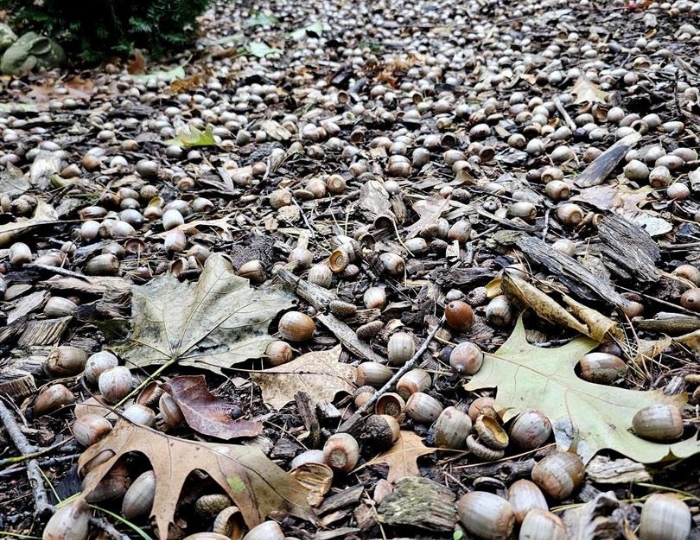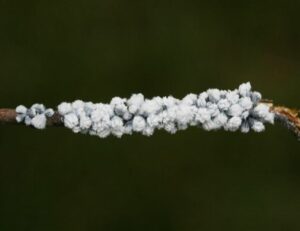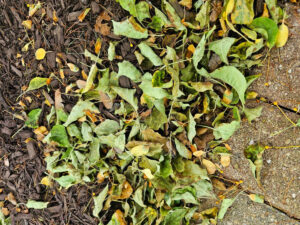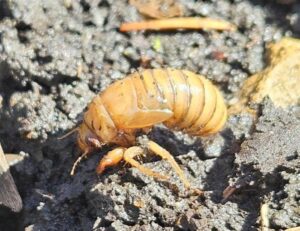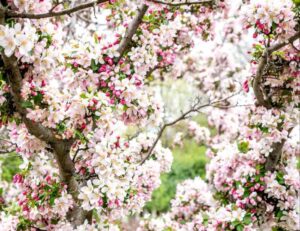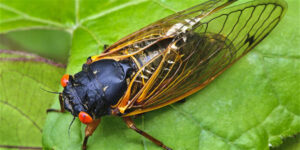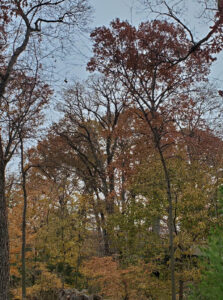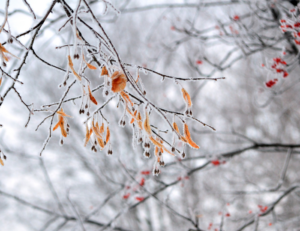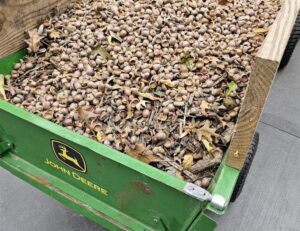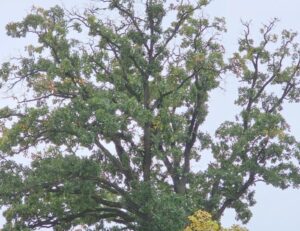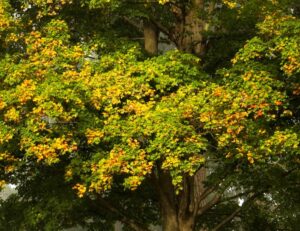Once every several years, nut bearing trees will seemingly rain either acorns, walnut or hickory nuts also referred to as a ‘seed crop’. If any of these trees are over your house, you’ve undoubtedly experienced trouble sleeping as they bang off the roof or deck all night long. If a car is parked under their canopy, park elsewhere to avoid sustaining subtle dents resembling that of hail damage. If you are walking outside and one finds your head…well…you’ll know it!
This phenomenon is referred to as ‘Masting’.
The acorns in this photo were not manually thrown into this small, mulched area for photographic effect.
These acorns fell naturally and represent just how many have fallen from one tree, so far, in a very small area.
Masting trees can start dropping their acorns or nuts as early as mid-August and continue dropping through mid-October as a rule.
A single Oak can drop as many as 10,000 Acorns during one masting year. Fewer will fall from Hickory or Walnut trees but those nuts are larger and louder and will cause bigger dents and hurt a lot more should they bounce off your head.
Masting trees will have exceptionally light to no crops of acorns or nuts in the year or two following heavy seed years. This is the case because the tree expends so much energy creating the ‘mast’ crop, it doesn’t have enough energy left to generate more seed too soon. Once those lean years have passed by, the tree will start to re-produce seed once again. It will take up to 18 months for those seeds to re-develop, mature and begin falling in the next masting season.
Many experts believe, and we concur, that masting is far worse when trees feel stressed from environmental stressors such as root rot from too much rain, as our area experienced from 2008 to 2019, or from drought stress which our area has suffered through from 2020 through 2023. Stressed trees can sense their own potential demise, and as such, will put it’s energy into mast seed crops every few years as a way of ensuring its own species survival.
An old ‘wives tale’ during masting years was to expect an exceptionally harsh winter. While this may turn out to be true in this coming El Nino Winter, this is purely coincidental. Not all trees, not even trees of the same species, will mast in the same year. There is no specific rhyme or reason as to what year a specific tree will choose to impress us with its abundance of seed.


